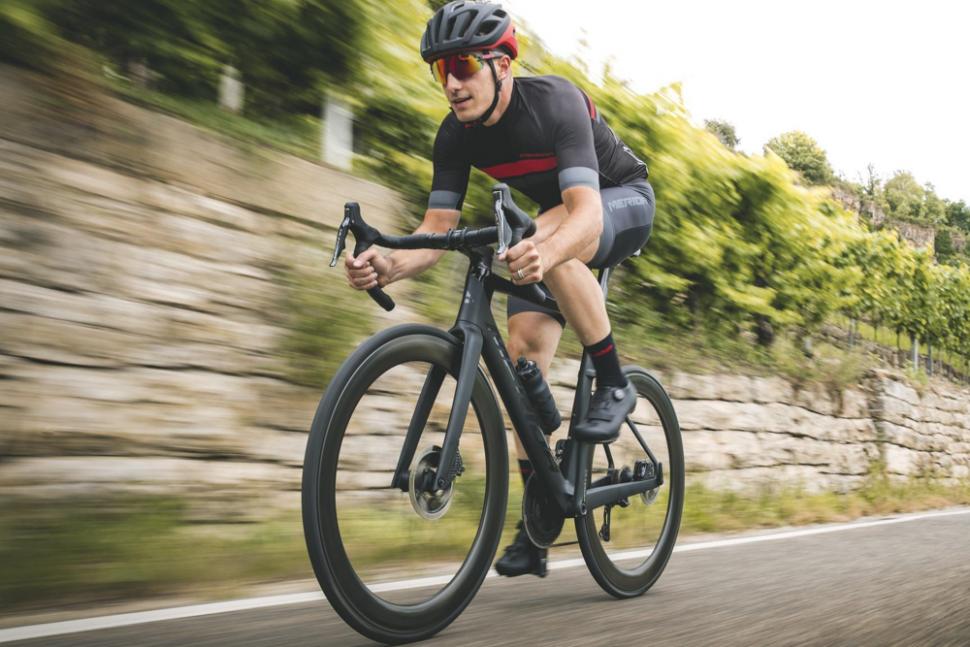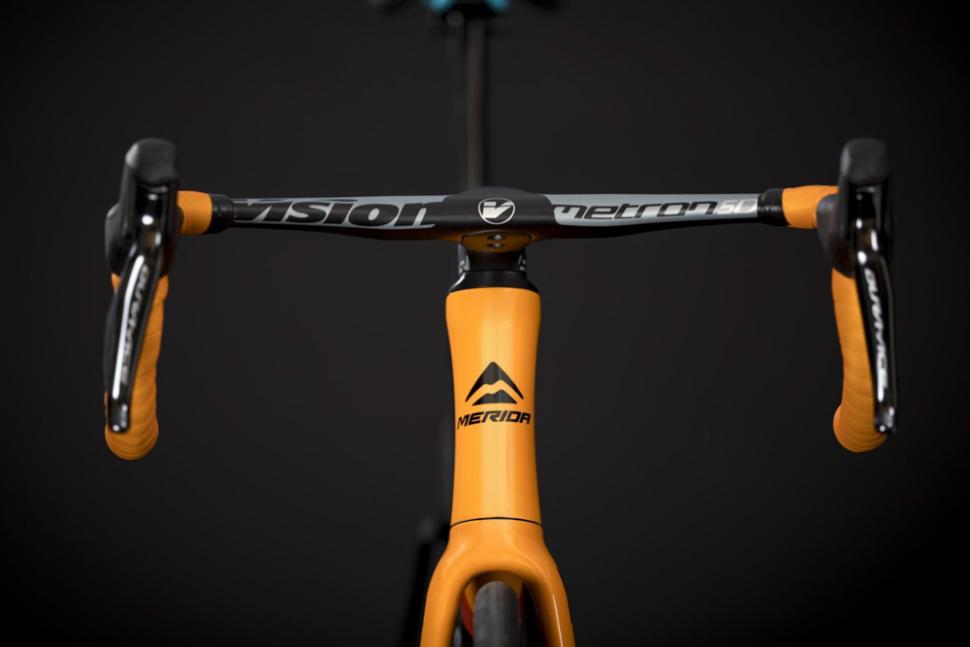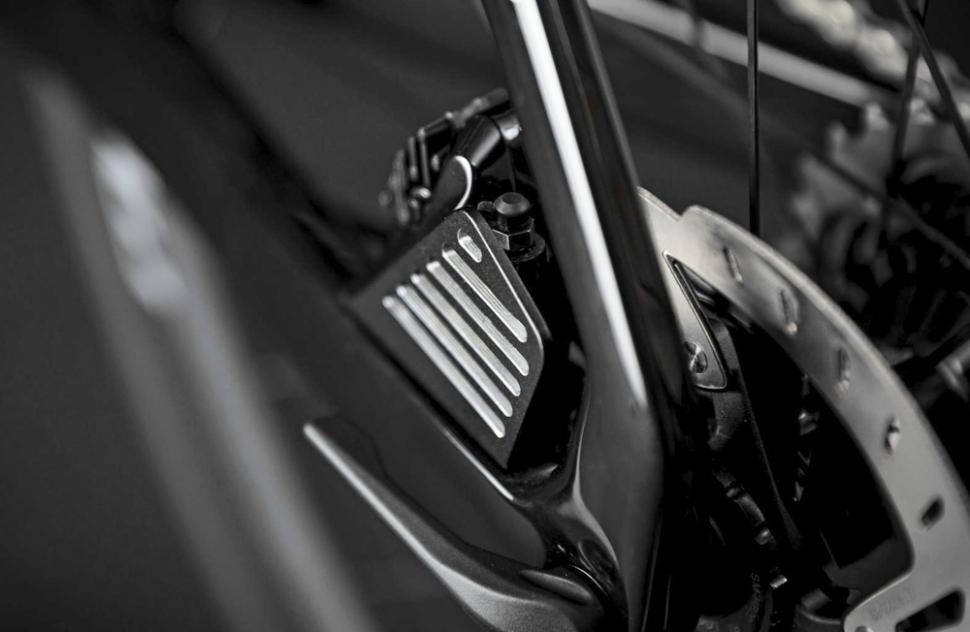- News
- Reviews
- Bikes
- Accessories
- Accessories - misc
- Computer mounts
- Bags
- Bar ends
- Bike bags & cases
- Bottle cages
- Bottles
- Cameras
- Car racks
- Child seats
- Computers
- Glasses
- GPS units
- Helmets
- Lights - front
- Lights - rear
- Lights - sets
- Locks
- Mirrors
- Mudguards
- Racks
- Pumps & CO2 inflators
- Puncture kits
- Reflectives
- Smart watches
- Stands and racks
- Trailers
- Clothing
- Components
- Bar tape & grips
- Bottom brackets
- Brake & gear cables
- Brake & STI levers
- Brake pads & spares
- Brakes
- Cassettes & freewheels
- Chains
- Chainsets & chainrings
- Derailleurs - front
- Derailleurs - rear
- Forks
- Gear levers & shifters
- Groupsets
- Handlebars & extensions
- Headsets
- Hubs
- Inner tubes
- Pedals
- Quick releases & skewers
- Saddles
- Seatposts
- Stems
- Wheels
- Tyres
- Health, fitness and nutrition
- Tools and workshop
- Miscellaneous
- Cross country mountain bikes
- Tubeless valves
- Buyers Guides
- Features
- Forum
- Recommends
- Podcast
TECH NEWS
 2021 Merida Reacto Riding Stock-2
2021 Merida Reacto Riding Stock-2Merida’s 2021 Reacto gets aero refinements to save you 4 watts
Merida has launched the fourth version of its aero race bike the Reacto. Following the 2021 trend, the front end is fully integrated, saving a claimed 2 watts with Merida claiming the other 2 watts are saved via the new fork, where the crown is tucked further into the junction of the headtube and downtube.
Further changes can be found at the seatstays which have been lowered along with a concealed seat post clamp, hidden through-axle as well as the more streamlined and neatly integrated disc coolers. Tyre clearance has also been tweaked with Merida saying that a boost to 30mm tyre clearance improves the comfort and gives additional control on rougher roads. Oh, and bye-bye rim brakes.
The key bits:
- 2 watts saved through fully internal routing
- 2 watts saved via a new, “more integrated” fork
- Seatstays dropped for “further drag reduction”
- The Reacto is now disc-brake only
- CF5 models are electronic drivetrain only
- CF3 frames can take mechanical groupsets
“The king is dead, long live the king!” says Merida of the seemingly improved, not overhauled 2021 Reacto. That said, Merida seems to suggest a move for the Reacto away from all-out aero to a more all-around bike, something that we’re seeing a lot of recently.
What can you expect from the new Reacto? Merida says that it “will once again deliver tons of fun and begs you to ride fast – all the time.”
“With a clean design, optimised aerodynamics, cockpit cable integration, tyre clearance for up to 30 mm wide tyres, the well-proven Merida S-Flex seat post for maximum comfort and – for an aero road bike – very lightweight frame, it offers everything a modern aero bike needs to bring to the table.”
First ride review: 2021 Merida Reacto Disc Team-E
Marginal aero improvements
The new Reacto comes with some watt-saving claims for the two big changes that have been made at the front end. I’ll go through what Merida says, but the short story is a claimed 4 watt saving thanks to more integration, of both the cables and the fork crown.
Firstly, Merida has tucked those brake and shift cables neatly away into the head tube with nothing visible to the wind. Where the cables entered the down tube on the 2019 Reacto, the 2021 bike takes them down the head tube with a cutout in the headset’s compression ring allowing the cables to pass through and continue their journey to the brakes and derailleurs.
This, Merida claims, results in “complete cable integration which offers a saving of 2 watts.”
Further to this, “the new fork is even more integrated into the frame” for another 2-watt saving. Merida goes on to mention the seatstays which have been dropped slightly, along with other integrated features like the seatpost clamp and thru-axles which, they claim, “all contribute to reducing the aerodynamic drag further,” though no figures are given.
All internal
Aesthetically, the big change comes at the front end with all models of the Reacto benefiting from neatly tucked-away cables.
On the Team edition that we have in for testing (you can read my first ride review here), Vision’s integrated Metron 5D bar/stem is used, giving fully internal routing. On the models that don’t feature this bar, Merida has turned to a Vision stem with a spacer underneath that runs the length of the stem, holding the brake hoses and any shift cables against the underside of the stem.
This goes right through the range, though what shifting system you can use will depend on the frame that you get.
Frames using the CF3 carbon benefit from being able to take mechanical shift cables while the CF5 frames will only take electronic.
The carbon used on the frame also carries a weight penalty, though Merida hasn’t said exactly how much weight is added for the CF3 frame.
All that we know is that Merida claims a medium-sized CF5 frame weighs 965g with the fork weighing 457g.
Bigger tyres for comfort and control
Like many current aero road bikes, the Reacto now has room for some pretty chunky tyres with Merida saying that you can fit 30mm tyres for added comfort and control on rougher roads.
A new version of the Disccooler
Merida continues to use small pieces of slotted aluminium to help keep the brakes cool. Called the Disccooler, Merida said that last year’s design helped to reduce heat by 35%, though we’ve been given no such claims with this new design.
What Merida does say is that the design has been improved to integrate the Disccooler into the frame. It mounts under the flat-mount brake callipers. Speaking about the original design for the Disccooler, Merida said that “while front brakes are always well-cooled thanks to constantly being exposed to the oncoming airstream, the performance of rear brakes benefits from active heat management.”
“The Merida engineers had their own vision of how this could be done and developed a new solution. The resulting component is made of forged aluminium and is screwed tight under the rear calliper.
“In this position, [the Disccooler] effectively dissipates the uprising heat through CNC-milled cooling fins.”
Merida has stuck with the same carbon fiber layup with the range-topping 7000e to Team models getting ‘CF5’ while the more wallet-friendly 4000-6000 models.
Bikes and prices
Speaking of the range, the Reacto starts with the £2,250 Reacto 4000 and goes up to the £9,000 Reacto 9000e. We’re having to make do with the £10,299 Team edition bike for review.
Speaking of which, you can read my first-ride thoughts here.





That sounds like a very good life choice! But yes - there's a fair bit of "if we only work 14 hour days our competitors will work 15 and eat us...
Ah, but surely it's just the few slow cyclists you can't see in the picture getting in the way of drivers which clogs the system up (grit in oyster...
".. there were no criminal acts which would allow prosecution”...
Don't buy American.
So many motorists don't observe zebra crossings....
I don't quite get internal frame storage, surely you're making the frame weaker by cutting a hole in it? Are they really saying they've got more...
I expect if we frequented truckdriver websites that featured articles on the truck drivers being unfairly treated (which I agree they are) in this...
Well they're definitely not cheap
And other counties also have done this IIRC with total cost/ benefit - including contribution to businesses and shopping - with similar results. (I...
I pray Wiggins has found peace and happiness; he was a great cyclist, no one can take that away from him. And a huge thanks to Lance Armstrong for...